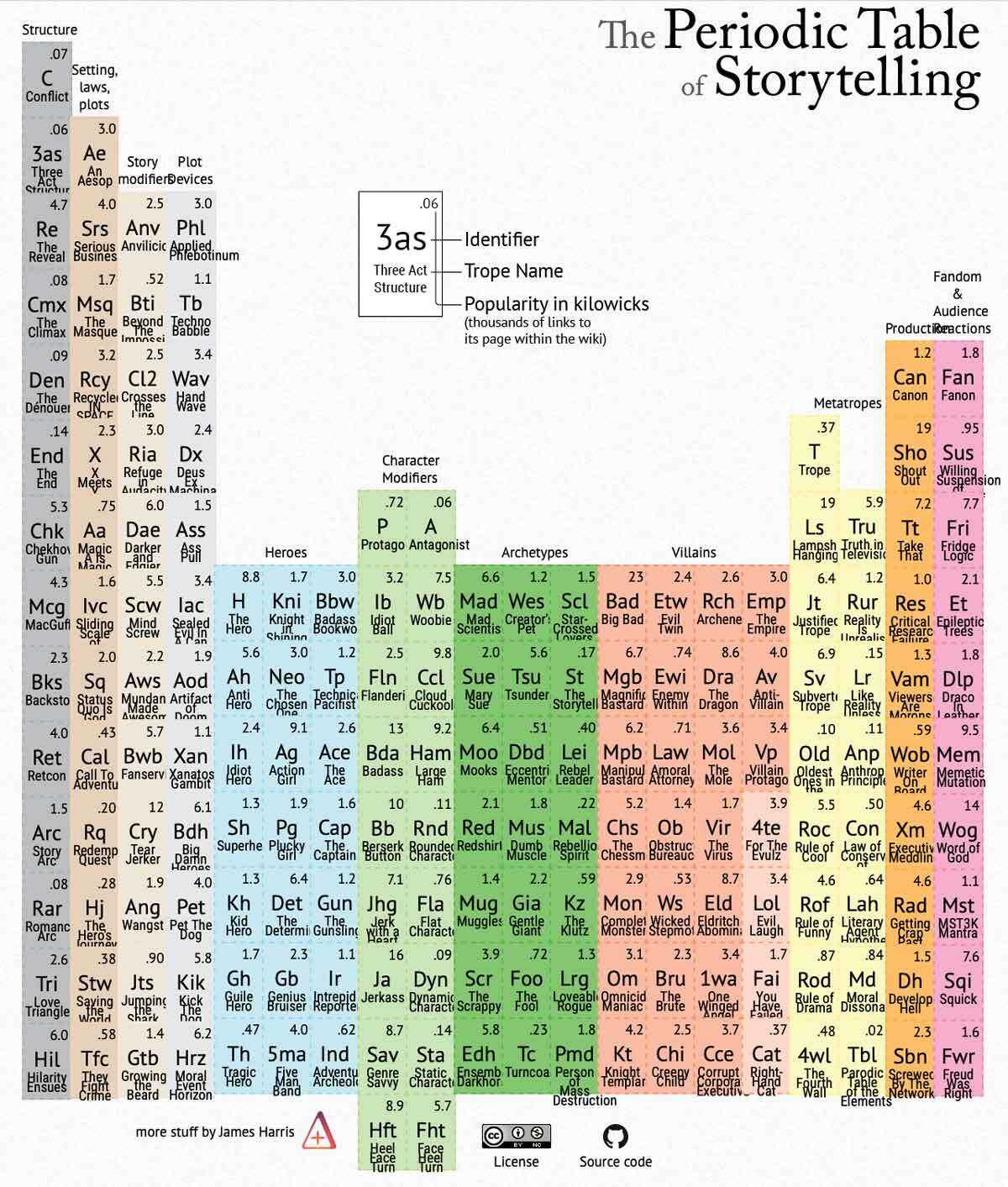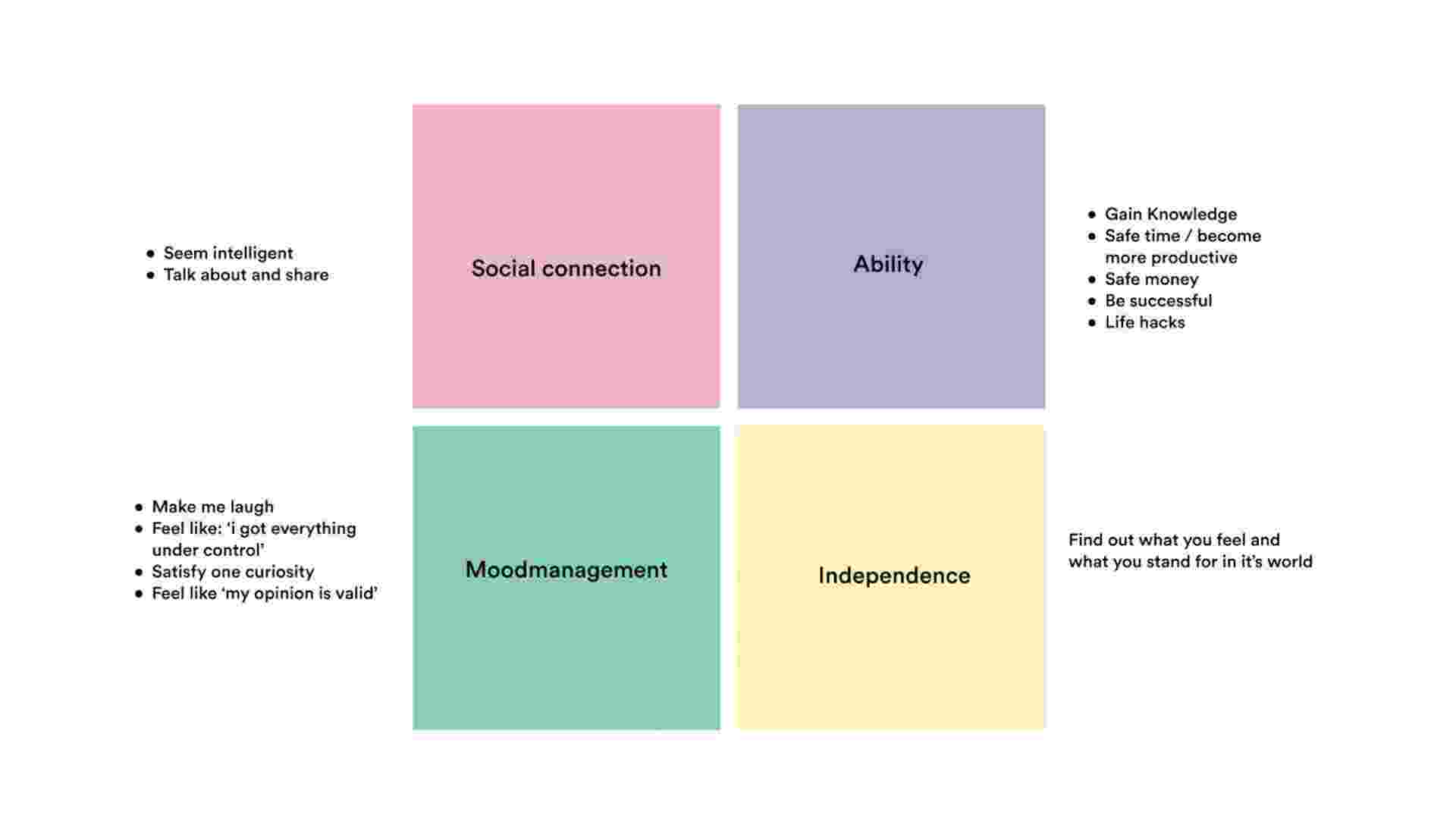AI plays a multifaceted role in shaping the future of storytelling, offering new opportunities for creativity, interactivity, across various media platforms and formats.
What is Storytelling and why does it work? #
"Stories are how we think. They are how we make sense of life. Call them schemas, scripts, cognitive maps, mental models, metaphors or narratives. Stories are how we explain how things work, how we make decisions, how we justify our decisions, how we convince others.“
Storytelling is a powerful tool in corporate communication and advertising for conveying important messages. However, writing a good story is more challenging than it may initially seem, and there are several structures that can assist us in crafting a narrative that resonates well with the audience.
One such structure is the classic three-act structure, which divides the story into three parts: the setup, the confrontation, and the resolution. This structure helps in building a compelling narrative by establishing the context, introducing and escalating conflict, and then resolving it in a satisfying manner.
Another helpful framework is the Hero's Journey, which outlines a series of steps that the protagonist typically goes through in a story. This journey not only makes the story engaging but also relatable to the audience, as it mirrors the universal experiences of challenge, struggle, and triumph.
The use of archetypes, which are universally recognized symbols or characters, can also make stories more relatable and engaging. By incorporating familiar archetypes, storytellers can tap into the collective unconscious of their audience, making the narrative more impactful.
Guidance for Writing a Story #
The aim of this workshop was for us to design our own story, and for this purpose, we were introduced to both very well-known structures and creativity techniques to help us get started more quickly.
The classic structure of a story
1. The Beginning
This is where the characters, setting, and basic situation are introduced. Viewers get to know the main characters, their circumstances, and the world they inhabit. It sets the stage for the story.
2. Conflict / Rising Action:
Conflict is the central problem or struggle that the main character or group of characters (protagonist) faces and drives the plot forward and creates tension.
3. Transformation (Climax):
The climax is the turning point of the story, where the conflict reaches its peak. It's the most intense moment when the protagonist confronts the conflict directly, and their actions lead to a resolution. This is often where the protagonist undergoes a significant transformation or growth, either in understanding, abilities, or character.
4. Growth (Falling Action):
Following the climax, the story begins to wind down. The consequences of the climax unfold, and loose ends are tied up. Characters may reflect on their experiences and the changes they've undergone.
5. End:
The resolution is the final outcome of the story. It's where the conflict is fully resolved, and any remaining questions or conflicts are addressed.
It's important to note that not all stories follow this structure, and variations can occur depending on the genre, style, and individual creativity of the author or storyteller.
Creative Approach #1: The Periodic Table of Storytelling
Created by computer game designer James Harris, also known as "The Pixar Detective," the Periodic Table of Storytelling provides a visual framework that categorizes common narrative elements and archetypes found in storytelling, such as character types, plot devices, and themes. It provides an overview of storytelling conventions and patterns, helping writers and creators in understanding, analyzing, and implementing these elements within their own narratives and also leads to TV Tropes Wiki articles that give deeper insights into all the offered topics?

Storytelling Principle: The "Hook, Hold, and Payoff
The "Hook, Hold, and Payoff" principle is a storytelling technique that outlines the structure of engaging narratives. Here's a breakdown of each component:
The "Hook" refers to the beginning of the story, where the audience is captivated and drawn in. It typically involves presenting an intriguing or attention-grabbing element that piques the audience's curiosity and compels them to continue experiencing the story.
Hold: The "Hold" phase involves maintaining the audience's interest and engagement throughout the story. This is achieved by sustaining momentum, escalating tension, and developing characters and plot lines in compelling ways. The hold phase aims to keep the audience emotionally invested, eagerly anticipating what will happen next.
Payoff: The "Payoff" is the culmination of the story, where the narrative threads converge, and resolutions are reached. It delivers on the promises set up by the hook and hold phases, providing satisfying resolutions to conflicts and character arcs. The payoff phase offers emotional closure, leaving them with a sense of fulfillment or resonance. It often includes key moments of climax, resolution, and thematic resonance that leave a lasting impact on the audience.
Overall, the Hook, Hold, and Payoff principle guides storytellers in crafting narratives that effectively capture and maintain audience interest, leading to a rewarding and memorable storytelling experience.
The Pixar Story Spine
The Pixar Story Spine is a narrative structure used by writers at Pixar Animation Studios to outline and develop their stories. It serves as a template that structures the narrative in a simple, yet deeply compelling way. The Story Spine consists of a series of sequential elements that build upon each other, ensuring that the story flows logically from beginning to end while maintaining the audience's interest.
The basic outline of the Pixar Story Spine goes as follows:
- Once upon a time, there was...
- Every day ...
- But one day ...
- Because of that ...
- Because of that ...
- Because of that ...
- Until finally ...
- And ever since that day ...
This structure is designed to help storytellers craft their narratives by focusing on the progression of events that lead to a change in the life of the protagonist. It emphasizes causality, showing how each action leads to a reaction, and builds up to a climax and resolution that are both satisfying and transformative. The Pixar Story Spine is celebrated for its simplicity and effectiveness, making it a popular tool among writers seeking to create engaging and emotionally resonant stories.
Creative Approach #2: Story Cubes
As a creative approach, we were required to use Rory’s Story Cubes to invent a story in a group. This method proved to be exceptional due to its playful approach and the symbols on the dice, which served as cues. These elements not only facilitated a more engaging storytelling process but also provided us with tangible starting points to spark our creativity and collaboration within the group.
You can find different sets of Rory’s Story Cubes here
Storytelling on Social Media #
In the realm of digital communication, storytelling on social media emerges as a particularly dynamic and engaging method to forge connections with audiences. It transcends mere content presentation, weaving narratives that captivate and resonate on a personal level. Integral to an effective content strategy is the principle of delivering the right information at the right time, catering to the evolving preferences and behaviors of online communities. In today's digital landscape, stories on social media platforms have become indispensable, transforming how we share, consume, and interact with content. This shift underscores the necessity of adapting our messaging to meet diverse audience motivations and needs.
Motivation for Audience Needs
Motivations for Storytelling for Target Groups refers to the reasons why individuals or groups engage in storytelling activities, particularly focusing on specific target groups. These motivations can vary depending on the audience's needs, interests, and goals. The concepts of social connection, mood management, independence, and ability in the context of storytelling and perception have deep roots in psychology, sociology, and cognitive science.
1. Social Connection:
Social Identity Theory: This psychological theory suggests that individuals categorize themselves and others into social groups based on shared characteristics, fostering a sense of social identity. Narratives often tap into these social identities, promoting a feeling of belonging and connection.
- Seem intelligent
- Talk about and share
2. Mood Management:
Affect Theory: This theory explores how emotions influence individuals' perceptions and behaviors. Narratives can evoke different emotions, contributing to mood management by providing an emotional outlet, a source of joy, or a way to process negative feelings.
- Make me laugh
- Feel like “I got everything under control”
- Satisfy one's curiosity
- Feel like “My opinion is valid“
3. Independence:
Self-Determination Theory (SDT): SDT is a psychological theory that focuses on the motivation behind choices and behaviors. Autonomy is one of the key components, emphasizing the importance of individuals feeling in control of their actions. Narratives that depict characters achieving independence resonate with the human need for autonomy.
Find out what you feel and what you stand for in this world.
4. Ability:
Social Cognitive Theory: This theory, proposed by Albert Bandura, emphasizes the role of observational learning and modeling in acquiring new behaviors and skills. Narratives often serve as a platform for observational learning, showcasing characters developing abilities and overcoming challenges.
- Gain Knowledge
- Safe time / become more productive
- Safe money
- Be successful
- Life Hacks

GenAI & Storytelling: From Theory to Practice #
This chapter highlights the core segment of our workshop, where we transitioned from theoretical understanding to practical application, focusing on the innovative intersection of Generative Artificial Intelligence (GenAI) and storytelling. Our task was to not only grasp the fundamentals of GenAI, but also to apply these concepts creatively, utilizing the latest models to craft compelling narratives. This hands-on approach allowed us to explore the vast potential of AI in storytelling, pushing boundaries of traditional narrative techniques to include AI-driven creativity and innovation.
Understanding the Basics
Grasping the essentials of AI, particularly generative AI, is pivotal for efficiently utilizing storytelling tools. A clear understanding of prompting, prompt patterns, and how to manage AI hallucinations ensures we can effectively and creatively engage with these technologies. This knowledge is fundamental to harnessing the full potential of GenAI in storytelling, enabling precise and innovative narrative creation.
- Artificial Intelligence (AI):
AI refers to the simulation of human intelligence in machines programmed to think and learn like humans. - Generative AI:
This subset of AI focuses on creating new content, from text to images and beyond, by learning from vast datasets. - Prompting:
The process of providing AI with a specific instruction or query to generate content. - Prompt Patterns:
Structured ways of formulating prompts to guide AI in generating specific types of responses. - Hallucinations:
Occurrences where AI generates false or nonsensical information, not grounded in reality. - Cautionary Measures:
Important considerations include safeguarding sensitive data and thoroughly reviewing AI-generated content for accuracy and appropriateness.
Tools Used in the Workshop
The project utilized several cutting-edge tools to conceptualize and create an emotional narrative for a brand:
- ChatGPT
- Runway
- Leonardo
- Perplexity
- Pi.ai
Project Overview: Crafting a Story for Social Media
The centerpiece of this workshop was the task of crafting a story for social media, utilizing the theories we had learned and the application of generative AI. Here are the steps we followed to bring our project to fruition:
- Choosing the Brand: The initial step was to select a brand that would anchor our narrative. We chose Ikea for its broad appeal and the emotional resonance of its products.
- Determining the Product and Story Type: Next, we decided on the product and the kind of story we wanted to tell. Aiming for an emotional impact, we focused on tone and voice, key components in setting the narrative's mood.
- Selecting the Exact Format: We opted for an Instagram story format, utilizing the 9:16 aspect ratio and targeting a duration of approximately 45 seconds. This choice was made to maximize viewer engagement on the platform.
- Naming the Product: With the assistance of ChatGPT, we named our central object Woodie, a chair that would embody our story's themes of legacy and transition.
- Structuring the Story Content: We used ChatGPT to help structure the specific content of our story, ensuring that the narrative flowed logically and compellingly.
- Creating a Timeline: A detailed timeline was developed to meticulously plan out which images would convey specific emotions, ensuring a coherent emotional journey through the story.
- Generating Images with Midjourney: To visually tell our story, we generated images using Midjourney, which provided the artistic representations needed to bring our narrative to life.
- Selecting Appropriate Music: Music was carefully chosen to complement the visuals, enhancing the emotional depth and engagement of the story.
- Animating Images with Runway: The images created with Midjourney were then animated using Runway, adding dynamism and fluidity to our visual storytelling.
- Assembling Videos in CapCut: Finally, we compiled the individual 4-second video segments into a cohesive story with music using CapCut, completing our emotional and engaging narrative for social media.
This structured approach, blending theory with the practical application of generative AI tools, enabled us to craft a story that not only demonstrated technical proficiency but also emotional depth and resonance, showcasing the power of storytelling in the digital age.
Where to go from here #
Read more about the master’s program in Content Strategy on the website of FH Joanneum. Find out more about Jennifer Fritz.
References #
Campbell, Joseph. The Hero with a Thousand Faces. New World Library, 3. Auflage, 2008.
Booker, C. (2004). The Seven Basic Plots: Why We Tell Stories. Continuum.
https://jamesharris.design/periodic/
Lecture: AI on Storytelling:January 30th and 31st, 2024

